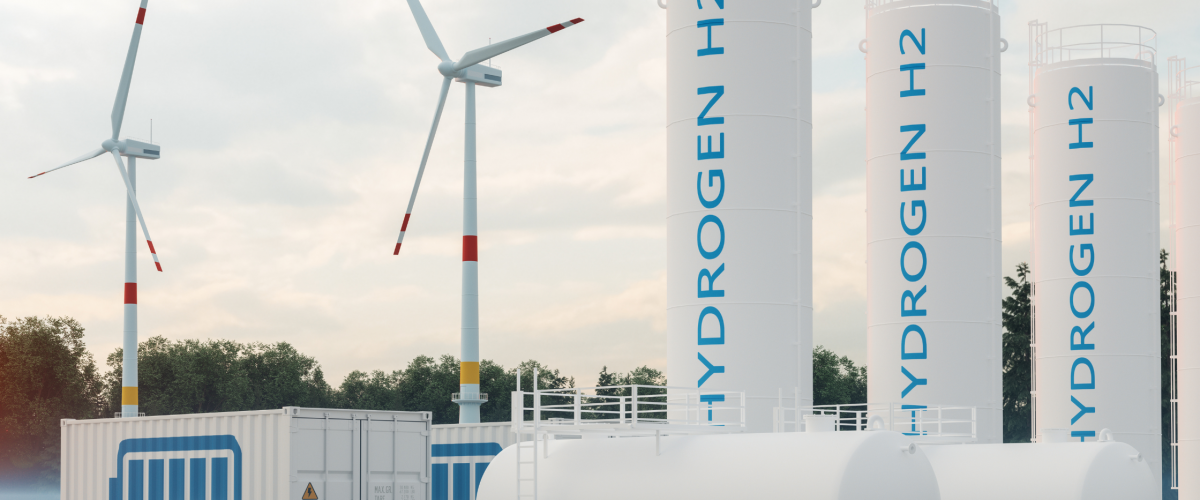As the global push for decarbonization gains momentum, the oil and gas industry — one of the largest contributors to greenhouse gas emissions — is under increasing pressure to evolve. While many companies have already taken steps toward cleaner operations, one emerging technology stands out as a true game changer: green hydrogen.
Heralded as a key pillar in the transition to a low-carbon future, green hydrogen has the potential to significantly reduce emissions across oil and gas operations, while supporting broader energy security and sustainability goals. But what exactly is green hydrogen, and how is it poised to reshape the traditional energy sector?
What is Green Hydrogen?
Hydrogen is the most abundant element in the universe and a versatile energy carrier. But how it’s produced makes all the difference:
-
Grey hydrogen is produced from fossil fuels (mostly natural gas), releasing significant CO₂ emissions.
-
Blue hydrogen uses the same process but includes carbon capture and storage (CCS) to reduce emissions.
-
Green hydrogen, on the other hand, is produced via electrolysis using renewable electricity (solar, wind, or hydro) to split water into hydrogen and oxygen — with zero carbon emissions.
It’s this emissions-free profile that makes green hydrogen such an attractive tool for decarbonizing heavy industries — especially oil and gas.
Why Green Hydrogen Matters for Oil & Gas
The oil and gas sector faces a dual challenge: meet global energy demands while cutting its carbon footprint. Green hydrogen offers several strategic advantages:
1. Decarbonizing Refining Processes
Hydrogen is already widely used in refining to remove sulfur and process crude oil into fuel. Replacing grey hydrogen with green hydrogen in these applications can drastically cut CO₂ emissions.
2. Cleaner Upstream and Downstream Operations
Hydrogen-powered equipment and fuel cells can be used in exploration, drilling, and logistics to reduce emissions in upstream operations. Similarly, midstream and downstream segments can benefit from hydrogen-powered transport and storage technologies.
3. Carbon-Free Power and Heat
Green hydrogen can be burned to produce high-temperature heat — a major requirement in oil and gas facilities — without emitting carbon, making it ideal for retrofitting existing operations.
4. Export and New Revenue Streams
Oil-rich countries can use their renewable energy capacity (especially in the Middle East and Africa) to produce and export green hydrogen, tapping into emerging global demand and diversifying national economies.
Major Players and Projects in Motion
Several oil and gas giants are already exploring green hydrogen to future-proof their operations:
-
Saudi Aramco and ACWA Power are investing in massive green hydrogen plants in Neom, Saudi Arabia.
-
Shell is working on integrating green hydrogen into its refineries in Europe.
-
TotalEnergies, BP, and Equinor are launching hydrogen pilot projects to support decarbonization goals.
-
ADNOC in the UAE is exploring both blue and green hydrogen as part of its net-zero strategy.
These projects signal not just environmental responsibility, but a shift in strategic thinking — recognizing green hydrogen as a critical component of energy transition portfolios.
Challenges Ahead
Despite its promise, green hydrogen still faces obstacles:
-
Cost: Electrolyzers and renewable energy remain expensive, though prices are dropping steadily.
-
Infrastructure: Hydrogen transport, storage, and fueling infrastructure are still in early stages.
-
Scale: Scaling up production to meet industrial demand will require major investments and long-term planning.
-
Policy Support: Regulatory frameworks and incentives are needed to drive adoption and ensure competitiveness with traditional fuels.
However, continued technological innovation, supportive policies, and global climate commitments are steadily aligning to overcome these challenges.
The Path Forward
Green hydrogen is no longer just a futuristic concept — it’s becoming a viable, scalable solution for decarbonizing hard-to-abate sectors like oil and gas. By integrating green hydrogen into refining, production, and export strategies, the oil and gas industry can dramatically reduce its environmental impact while opening new pathways for growth in a low-carbon economy.
For forward-looking companies, the question is no longer if they should invest in green hydrogen — but how fast they can integrate it into their transition plans.
The road to net-zero requires bold, transformative solutions. Green hydrogen represents one of the most promising tools available today, capable of reshaping the very foundation of energy production and use. As the oil and gas industry navigates this critical transition, embracing green hydrogen may prove to be both a strategic advantage and an environmental imperative.
Read more on Sparkview Energy:
The Future of Low-Carbon Petroleum Products in a Green Energy World
The Transition to Green Hydrogen
Green Equipment: Reducing the Carbon Footprint of Petroleum Operations


